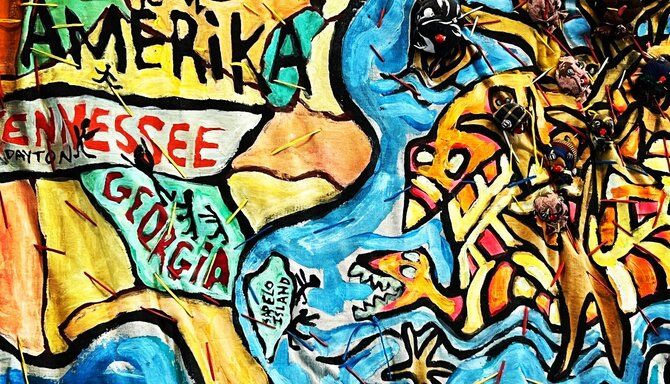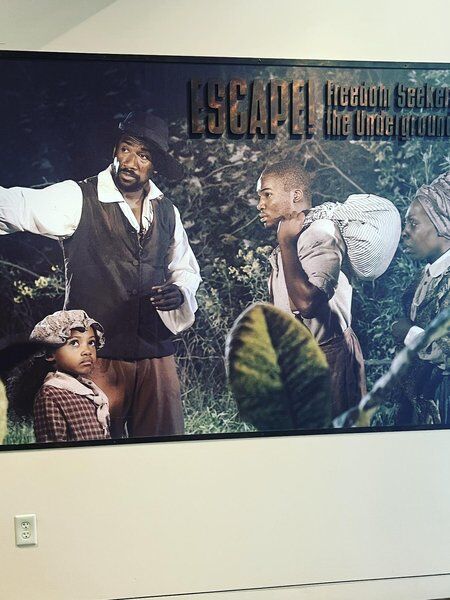
The National Underground Railroad: A Museum of Conscience
“To pursue inclusive freedom by promoting social justice for all, building on the principles of the Underground Railroad.”
Physically the National Underground Railroad Freedom Center is located in downtown Cincinnati, Ohio. But the light that it casts on the importance of inclusive freedom, extends globally. As a thought-provoking museum and educational institution, the Center shares the harrowing journeys undertaken by enslaved individuals along the Underground Railroad. As well as the network of abolitionists who risked everything to help them find freedom. Since its opening in 2004, the museum has shed light on the courage and resilience of these individuals and inspires discourse and action on the topic of slavery.

What is the Underground Railroad?
“The resistance to enslavement through escape and flight, through the end of the Civil War.”
The Underground Railroad was not a physical railroad but rather a reference to the pursuit of self-emancipation by enslaved African Americans. Initially, these individuals would complete the process completely unaided. However, with each year that passed, where slavery remained legal, more and more people endeavoured to assist in their escape.
Over time, a network of clandestine routes — that the enslaved could follow to freedom — became evident across the United States. Following natural and man made modes such as rivers, canals, ferries, and roads. And using safe houses, disguises, forgeries, and the help of sympathisers, slaves sought freedom in Canada, Mexico, the Caribbean, Northern U.S., and Europe. The National Underground Railroad Freedom Center has been established to honour their stories. As more routes become evident, they are added to the map.

A Symbolic Location
Perched on the banks of the Ohio river, location is symbolic when it comes to the Freedom Center. The river served as the divider between the Southern slave states and the free states of the North. During this time, thousands of slaves would cross the river from Kentucky into Cincinnati, when following the Underground Railroad.
Today, the undulating contours of the building, earthy exterior textures, and winding paths — sweeping through the interior like the currents sweep through the river — reference the journeys taken by these slaves.

Creating the National Underground Railroad Freedom Center
The museum’s concept was first proposed in 1994. After 10 years of meticulous planning, fundraising, and construction, it eventually opened on 3rd August 2004, where it welcomed 20,000 people. This stretched to 280,000 visitors from all over the world, in the first year.
The structure itself cost $110 million, encompasses 158,000 square feet, and extends across three pavilions representing courage, cooperation, and perseverance. On the outside, the transition from slavery to freedom is reflected in the darkness giving way to light as the building dramatically curves and folds. It was designed by Boora Architects with Blackburn Architects and adds to the thought-provoking visitor experience within.
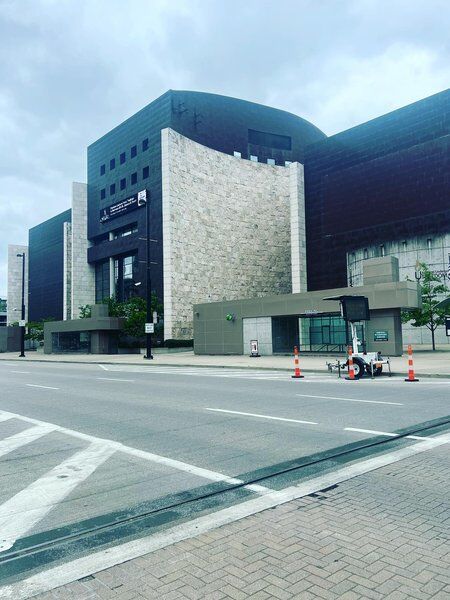
Within the National Underground Railroad Freedom Center
“I was the conductor of the Underground Railroad for eight years, and I can say what most conductors can't say — I never ran my train off the track and I never lost a passenger.”

Inside the Freedom Center, visitors are greeted with a combination of permanent and travelling exhibits, poignant artefacts, and immersive multimedia displays that recount the stories of the Underground Railroad. The museum's comprehensive collection covers a broad period of 300 years with a closer inspection of the Civil War era. Using personal narratives, rare documents, and interactive exhibits, the museum offers a profound glimpse into the lives of the enslaved, the courageous conductors, and the fervent abolitionists.

With a contemporary conscience, the Freedom Center also highlights the existence of modern slavery and our obligation to overcome it. Research on this matter is committed to fostering dialogue and promoting social justice. The museum hosts an array of educational programs, events, and community initiatives that encourage conversations about racial equality, human rights, and freedom for all. It provides a safe space for individuals and communities to confront the legacies of slavery, racism, and discrimination while inspiring positive change for the future.
The Slave Pen
“It’s nothing but a pile of logs, yet it is everything.”

One of the most evocative exhibits at the Freedom Center is the Slave Pen, a 21 by 30 feet authentic log slave pen, which can be entered by visitors. The pen would have been used to confine enslaved individuals before they were sold at auction. By 2003, it was the only remaining “rural slave jail”. Some of the names of the first slaves to be held within the pen are etched onto a wooden slab inside — presumably by the slave traders who used the pen. The chilling reality of this cramped and oppressive space serves as a poignant reminder of the cruelty and dehumanisation inflicted upon those in bondage.
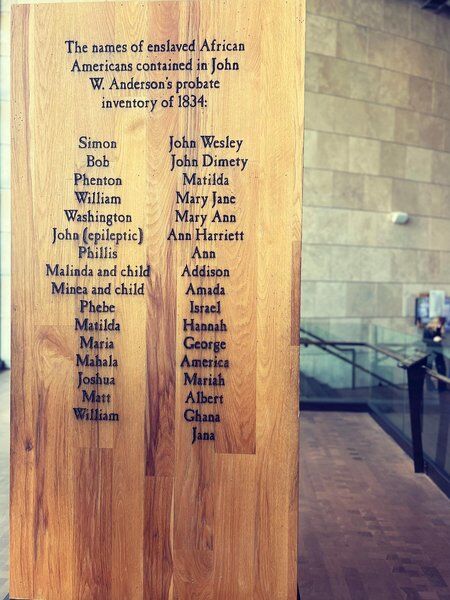
“The pen is powerful... It has the feeling of hallowed ground. When people stand inside, they speak in whispers. It is a sacred place. I believe it is here to tell a story – the story of the internal slave trade to future generations.”
Due to its positioning in the second floor atrium, visitors are continuously confronted by the Slave Pen throughout their museum experience. Furthermore, the large windows mean it can also be viewed by passer-by’s outside. In this manner the Freedom Center does not allow anyone to hide from this disturbing chapter of American history and encourages each of us to hold ourselves accountable for the way we treat people in our daily lives.
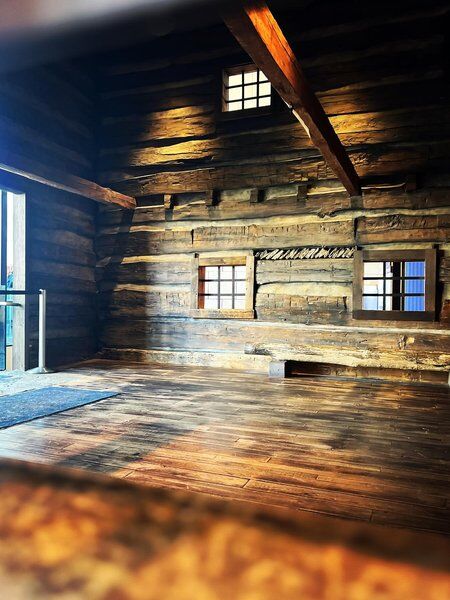
Freedom's Flame
At the heart of the museum, visitors encounter the Flame of Freedom, a solemn memorial that honours the millions who were enslaved and the thousands who fought for freedom. The Flame serves as a beacon of hope, resilience, and the eternal pursuit of liberty.
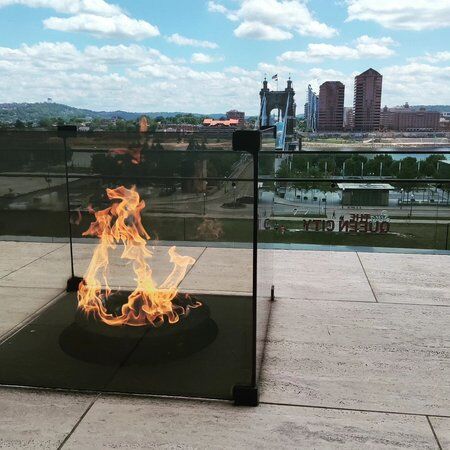
The National Underground Railroad Network to Freedom Program
The Network to Freedom Act is a National Park Service program established in 1998. Since its inception it has worked to honour the people of the Underground Railroad, with a three-pronged approach. It aims to educate the public, preserve important documents, and create a network of historic sites; interpretive and educational programs; and research facilities concerning the Underground Railroad.
Today the Network to Freedom consists of over 700 listings, across America. It actively identifies and commemorates lost or forgotten Underground Railroad stories in a way that remains respectful to local history. And has received several Network to Freedom Grants to carry out this work from the program established by Congress, in October 2000.

Our Thoughts…
Through its comprehensive efforts to illuminate the often-overlooked chapters of American history and amplify the voices of the oppressed, the National Underground Railroad Freedom Center not only educates us about the courage and sacrifices of those who fought for liberation but also compels us to reflect on the ongoing struggle for equality today. By preserving the stories of the past and integrating them into our collective narrative, the Freedom Center ensures that the lessons learned continue to inspire and guide visitors towards a more inclusive and just future. As we celebrate the triumphs of those who traversed the clandestine paths of the Underground Railroad, we are reminded that the journey towards freedom is a continuous one, urging us to confront modern challenges with the same determination and unity.
Interested in finding more places like this? Try one of our Interactive Scavenger Hunts- untangle cryptic clues as a team, as you are taken on a journey to the most unique, unusual and bizarre corners of Cincinatti and beyond!

